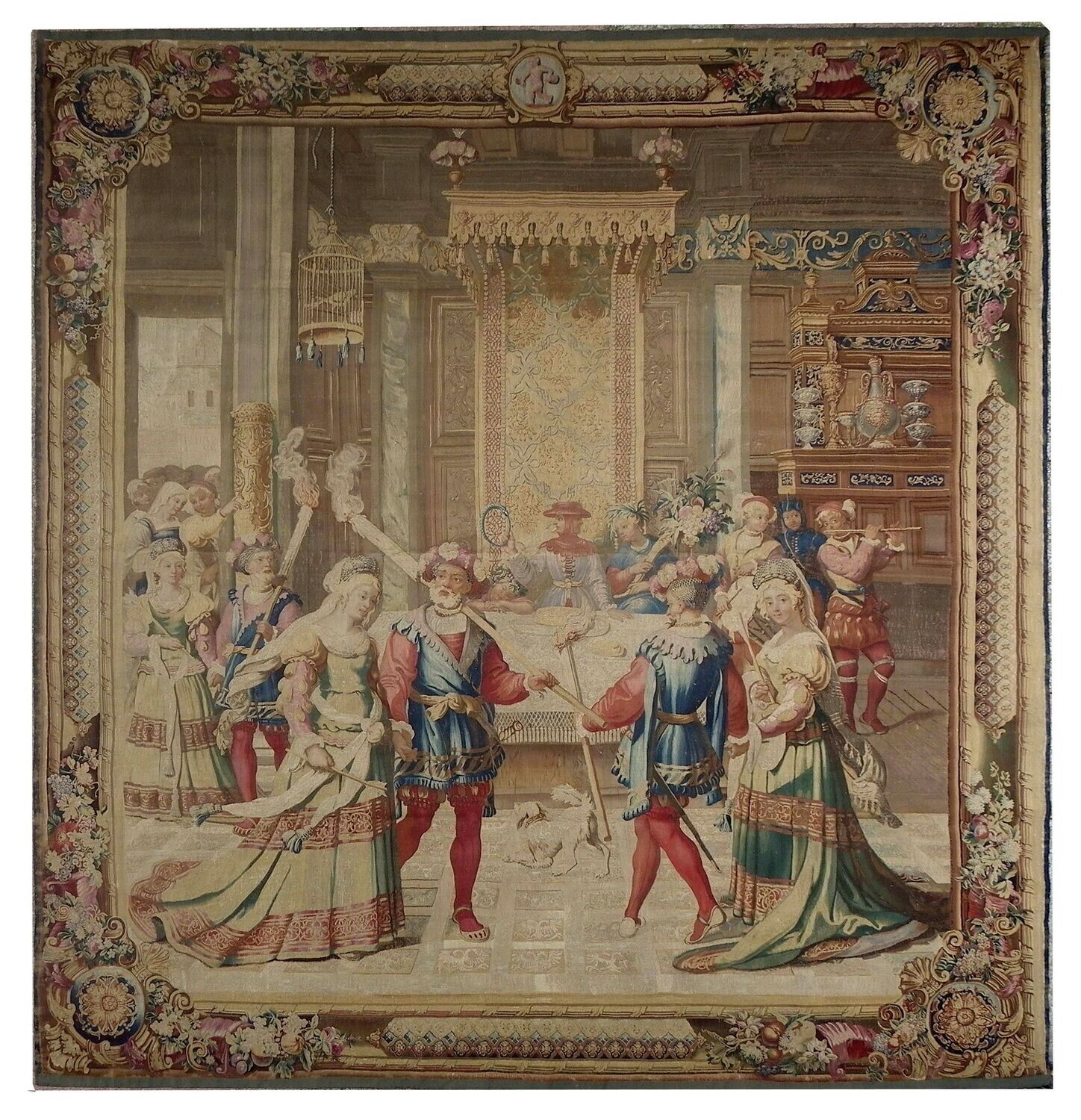A French Gobelin Allegorical Months Tapestry - 8th century - Dim:W327xH358
Eugène Müntz, La Tapisserie , Paris, 1882, p.221.
Exhibited Paris, Union Centrale des Beaux Arts appliqués à l'Industrie, 1876, no. 360bis. 'Le Mois de Janvier Gobelins, Monogramme 1.F. (Le Febvre) à Mme. Masselin'.
Catalogue NoteThe twelve months were a popular subject in tapestries of the 16 th and 17 th centuries. The months were represented by the labours of men and women appropriate to the time of year. January was often felling trees for warmth or feasting. The months were often associated with a sign of the zodiac and a pagan divinity. The labours and the zodiac sign together represented the earthly and heanly cycle of the year. The Zodiac signs were usually incorporated intothe borders or the very top within the sky of the main panel. The zodiac sign for January, is Aquarius (the water carrier), a representation of which is seen in a cabochon in the centre of the upper border of the present tapestry. The series were therefore usually sets of twelve. There is a comparable weaving of this panel from the series commissioned for Comte de Toulouse (1732-1737), with borders designed by Pierre Josse Perrot (active 1724-1735), in the Metropolitan Museum of Art, New York (Inv. 44.60.1). The borders show similar inspiration in design, and include the same water carrier motif against blue, in the lower border. A print of the subject, Allegory of the Month of January, by the Master of the Luke, circa 1525, showing the main subject without the border design, is recorded in A Private Collection, Chatsworth House (Inv. 1203).
Tapisserie Aubusson Verdure Ancienne Tapis Contemporain Coussin Tapis COLLECTION TAPISSERIE ANCIENNE TAPISSERIE CONTEMPORAINE COUSSIN TAPISSERIE ORIENT TAPIS PERSE TAPIS IRAN Achat Vente tapisserie anciennes à paris. Tapisserie Aubusson Ancienne, Tapisserie Bruxelles, Tapisserie Flandres, Coussin en Tapisserie
Tous droits réservés |
GALERIE JABERT


